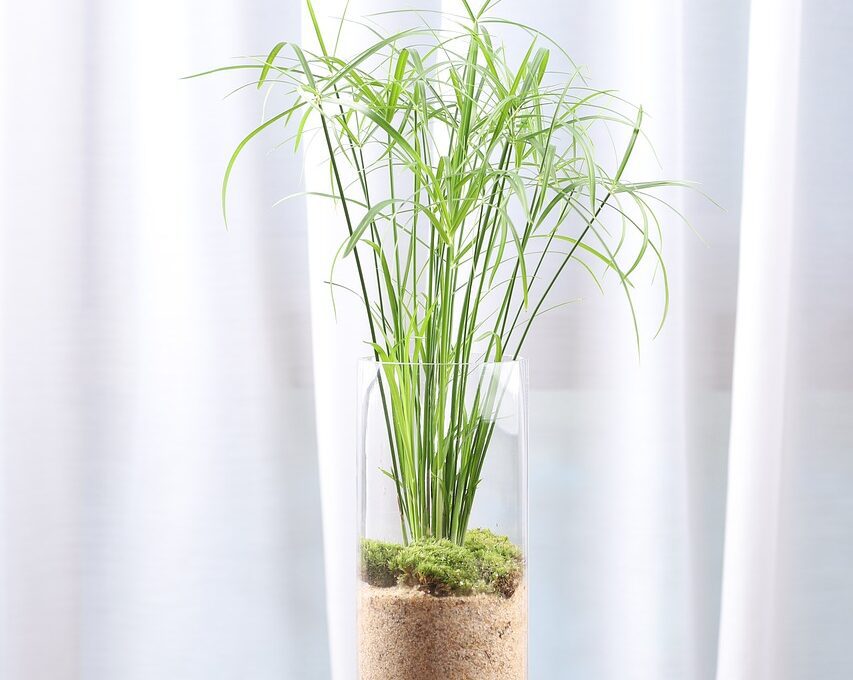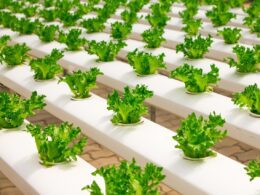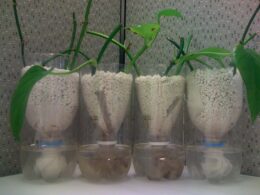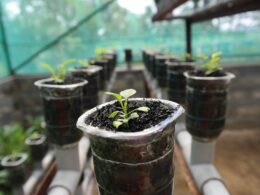Do you ever wonder if the tomatoes you buy from the grocery store are grown in soil or hydroponically? Hydroponic farming has been gaining popularity in recent years, and many people are curious about the taste and quality of produce grown in this way.
In particular, you may be wondering if hydroponic tomatoes taste better than those grown in soil. There are several factors that can affect the taste of a tomato, including the growing method, nutrient management, and environmental conditions.
In this article, we will explore the differences between hydroponic and soil-grown tomatoes, and whether or not hydroponic tomatoes really do taste better. By the end of this article, you will have a better understanding of the pros and cons of each method and be able to make an informed decision about which type of tomato to buy.
So let’s dive in!
Overview of Hydroponic and Soil-Grown Tomatoes
You’ll learn about the differences between growing tomatoes in water and growing them in the ground. Hydroponic and soil-grown tomatoes have their own advantages and disadvantages.
Hydroponic tomatoes are grown in a water-based nutrient solution rather than soil. This method of growing has been gaining popularity due to its ability to produce high yields of high-quality tomatoes in a controlled environment. One advantage of hydroponic tomato production is that it allows for precise control over the plant’s environment. The nutrient solution can be adjusted to meet the plant’s specific needs, resulting in healthier plants and higher yields. Additionally, hydroponic systems can be set up in smaller spaces and can be used to grow tomatoes year-round.
On the other hand, soil-grown tomatoes rely on the natural nutrients in the soil and are subject to weather and environmental conditions. Despite its advantages, hydroponic tomato production has its disadvantages. The setup and maintenance costs of a hydroponic system can be higher than traditional soil farming. There is also a learning curve for farmers who are new to hydroponics. Additionally, the lack of soil in hydroponic systems means that the plants may lack the same flavor and aroma as soil-grown tomatoes.
In summary, while hydroponic tomato production has advantages such as precise environmental control and year-round growing capabilities, it may not provide the same flavor as soil-grown tomatoes. The choice between the two methods ultimately depends on the farmer’s resources, preferences, and market demands.
Nutrient Management in Hydroponics
You can easily ensure that your hydroponic plants are receiving the perfect balance of nutrients, leading to healthier and more robust growth.
One key aspect of nutrient management in hydroponics is pH control. The pH level of your nutrient solution is crucial as it affects the plants’ ability to absorb nutrients. If the pH is too high or too low, your plants won’t be able to take in the nutrients they need. To maintain the ideal pH level, invest in a pH meter and adjust the pH as needed using pH up or pH down solutions.
Another important factor in nutrient management is the composition of your nutrient solution. Unlike soil-grown plants, hydroponic plants are not able to obtain nutrients from the soil. Instead, you will need to create a nutrient solution that provides all the necessary elements for your plants to thrive. The composition of your nutrient solution will depend on the type of plants you’re growing and their growth stage. You can use pre-made nutrient solutions or create your own using individual nutrient salts.
To make nutrient management easier, consider using a nutrient management system. These systems automatically monitor and adjust the pH and nutrient levels in your hydroponic system, ensuring that your plants receive the perfect balance of nutrients at all times.
With proper nutrient management, your hydroponic tomatoes can reach their full potential and produce delicious, flavorful fruits that’re just as tasty as their soil-grown counterparts.
Variability in Soil Quality and Weather Conditions
The quality of soil and weather conditions can vary greatly, affecting the growth and yield of plants in traditional farming methods. In soil-based agriculture, the quality of soil can be inconsistent. Some soils may lack essential nutrients required for the growth of plants, while others may contain too many nutrients, leading to over-fertilization. Additionally, weather fluctuations such as temperature, precipitation, and wind can have a significant impact on crop growth and yield.
To emphasize the impact of soil variability and weather fluctuations on plant growth, take a look at this table:
| Soil Quality | Yield (lbs) |
|---|---|
| Poor | 50 |
| Average | 100 |
| Excellent | 150 |
As you can see, the quality of soil is directly related to the yield of plants. Similarly, weather fluctuations can have a significant impact on plant growth and yield. For instance, drought can lead to water stress, causing plants to wilt and eventually die. On the other hand, excessive rainfall can lead to waterlogging, which can also have a detrimental effect on plant growth.
Overall, the variability in soil quality and weather conditions is a significant challenge for traditional farming methods. Hydroponics, on the other hand, eliminates these challenges by providing a controlled environment for plant growth. By precisely managing nutrient levels, temperature, and humidity, hydroponic systems can produce consistent, high-quality yields regardless of soil quality and weather conditions.
Does the Hydroponic Growing Method Affect the Size of Tomatoes Produced?
The reasons for small hydroponic tomatoes vary, but it is widely accepted that the hydroponic growing method itself does not directly impact the size of the tomatoes produced. Factors such as nutrient balance, lighting, temperature, and genetics play a significant role in determining tomato size. However, by optimizing these variables in a hydroponic system, growers can achieve larger, healthier tomatoes compared to traditional soil-based methods.
Taste Tests and Comparisons
When it comes to taste tests and comparisons between hydroponic and soil-grown tomatoes, there are several key factors to consider.
Blind taste tests can help remove bias and provide a more objective evaluation of the two types of tomatoes.
Expert opinions from chefs and food critics can also offer valuable insight into the flavor and texture differences.
Finally, consumer preferences are important to consider as they ultimately determine the market demand for hydroponic versus soil-grown tomatoes.
Blind Taste Tests
Get ready to be surprised by what your taste buds will tell you in blind taste tests. In a double blind experiment, participants are given two samples of tomato, one grown in soil and the other in hydroponics, without knowing which is which. They’re then asked to rate the taste of each sample.
The results of these taste perception experiments have been mixed, with some studies showing that hydroponic tomatoes taste better while others show no significant difference. However, it’s important to note that taste is subjective and can vary greatly from person to person.
Some people may prefer the sweetness and juiciness of hydroponic tomatoes, while others may prefer the earthy flavor of soil-grown tomatoes. Ultimately, the best way to determine which type of tomato tastes better is to try both and decide for yourself.
Expert Opinions
Now that you know blind taste tests have shown no significant difference between hydroponic and soil-grown tomatoes, let’s take a look at expert opinions.
According to many experts, hydroponic tomatoes can actually taste better than those grown in soil. One reason for this is that hydroponic systems provide consistent and precise nutrient delivery, which can enhance flavor. In contrast, soil-based agriculture can be challenging due to variations in soil quality and nutrient availability, which can result in inconsistent flavor.
Another benefit of hydroponics is that it allows for year-round production, regardless of the weather or season. This means that hydroponic tomatoes can be harvested at their peak ripeness, resulting in better flavor and texture. In addition, hydroponics uses less water and space than traditional agriculture, making it a more sustainable option for the future.
Overall, while soil-based agriculture has its challenges, hydroponics offers many benefits that can enhance the taste and sustainability of tomato production.
Consumer Preferences
Consumers’ preferences for the taste of tomatoes may be influenced by the growing method used. Some people prefer the taste of hydroponic tomatoes, while others prefer soil-grown tomatoes.
One factor that may influence these preferences is the organic certification of the tomatoes. Organic hydroponic tomatoes are grown without the use of synthetic fertilizers or pesticides, and organic soil-grown tomatoes are grown in soil that has not been treated with synthetic fertilizers or pesticides. Consumers who prioritize organic certification may prefer the taste of organic hydroponic tomatoes because they are grown in a controlled environment without the risk of soil contamination.
Another factor that may influence consumers’ preferences is the environmental impact of the growing method. Hydroponic tomatoes require less water and space than soil-grown tomatoes, and they do not require soil, which can reduce the risk of soil erosion and nutrient depletion. However, hydroponic systems require electricity to power pumps and lighting, which can contribute to carbon emissions.
Soil-grown tomatoes may have a higher carbon footprint due to the use of tractors and other machinery to till the soil and plant the tomatoes, but they may be more appealing to consumers who prioritize sustainability and traditional farming practices. Ultimately, the taste of tomatoes is subjective, and consumers’ preferences may be influenced by a variety of factors, including organic certification and environmental impact.
Conclusion and Recommendations
The conclusion and recommendations highlight the overall findings and suggest potential implications for growers and consumers.
After analyzing the factors influencing taste preferences and the impact of growing methods on nutrition, it’s clear that hydroponic tomatoes don’t necessarily taste better than soil-grown ones. However, there are still benefits to hydroponic growing, such as increased efficiency and reduced environmental impact.
If you’re a grower, it’s important to consider consumer preferences when deciding which method to use. While some consumers may prefer hydroponic tomatoes for their consistent appearance and texture, others may prioritize taste and nutrition. Additionally, it’s important to ensure that all growing methods are optimized for nutrition to provide consumers with the healthiest product possible.
As a consumer, it’s ultimately up to you to decide which type of tomato you prefer. While hydroponic tomatoes may have some benefits, soil-grown tomatoes can still be just as tasty and nutritious. When making your decision, consider factors such as taste, texture, and nutrition, and don’t be afraid to try both types to see which one you prefer.
Regardless of which type of tomato you choose, make sure to purchase from a reputable source to ensure the highest quality and safety standards.
Frequently Asked Questions
How does hydroponic tomato farming impact the environment and sustainability?
When it comes to hydroponic tomato farming, one of the most important factors to consider is its impact on the environment and sustainability. The good news is that hydroponic farming has a number of sustainability impacts that make it a more eco-friendly choice than traditional soil-based farming.
For starters, hydroponic farming is far more energy efficient than traditional farming methods. This is because hydroponic systems use less water and fertilizers, and because they’re designed to maximize the use of natural light.
Additionally, because hydroponic farms can be located closer to urban centers, they can reduce transportation costs and carbon emissions associated with shipping produce long distances.
All in all, if you’re looking for a sustainable way to grow tomatoes, hydroponic farming is definitely worth considering.
Is there a significant cost difference between hydroponic and soil-grown tomatoes?
Looking to compare the cost of hydroponic and soil-grown tomatoes? The answer is not straightforward, as it depends on market demand and availability.
Generally, hydroponic tomatoes have a higher initial investment cost due to the equipment and technology required for the growing process. However, they may also have a higher yield and faster growth rate, leading to potentially higher profits in the long run.
On the other hand, soil-grown tomatoes may have lower initial costs but may require more labor and maintenance, resulting in higher operational costs.
Ultimately, the cost comparison between the two methods may vary depending on factors such as location, season, and market demand.
Are there any nutritional differences between hydroponic and soil-grown tomatoes?
When it comes to tomato nutrition and taste comparison, both hydroponic and soil-grown tomatoes can be equally nutritious and delicious.
Tomatoes grown hydroponically are often praised for their consistent quality, while soil-grown tomatoes may have a more complex flavor due to the soil’s unique composition.
However, the nutritional content of both types of tomatoes is largely determined by their growing conditions, including the type of nutrients they receive and the amount of light and water they get.
So, whether you choose hydroponic or soil-grown tomatoes, you can be confident that you’re getting a healthy and tasty snack.
Are hydroponically grown tomatoes more susceptible to pests or diseases?
Hydroponically grown tomatoes can be more susceptible to pests and diseases than soil-grown tomatoes, but they also have better pest resistance and yield potential. This is because hydroponic systems create a controlled environment that can limit exposure to external factors that may introduce pests or diseases.
However, it’s important to monitor and maintain the hydroponic system properly to ensure optimal growing conditions and minimize the risk of pest and disease outbreaks. Overall, hydroponic tomatoes have the potential to yield higher quantities of healthy and tasty tomatoes, but it requires proper attention to pest control and maintenance.
How do hydroponic and soil-grown tomatoes differ in terms of texture and juiciness?
When it comes to comparing hydroponic and soil-grown tomatoes, texture and juiciness are two important factors to consider. Hydroponic tomatoes tend to have a firmer texture and are less juicy compared to soil-grown tomatoes. This is because hydroponic systems provide a more controlled environment, which can limit the amount of water and nutrients that the plants receive.
On the other hand, soil-grown tomatoes are more likely to have a softer texture and be juicier due to their exposure to a wider range of nutrients and moisture levels. Ultimately, the choice between hydroponic and soil-grown tomatoes comes down to personal preference and what factors you value most in your produce.
Conclusion
So, do hydroponic tomatoes taste better than soil-grown ones? After all the research and taste tests, the answer isn’t straightforward. It ultimately depends on personal preference, as both methods can produce delicious and nutritious tomatoes.
Hydroponic tomatoes offer consistent nutrient management and minimal variability in growing conditions, but some argue that soil-grown tomatoes have a more complex flavor due to the natural soil composition and weather conditions. However, with advancements in hydroponic technology, growers are finding ways to enhance flavor in their hydroponic tomatoes.
If you’re looking to try out hydroponic tomatoes, don’t hesitate! They offer a sustainable and efficient way to grow fresh produce, and with a little experimentation and attention to nutrient management, you can enjoy delicious tomatoes straight from your own indoor garden.









